Renewable Energy Can Change The World: Renewable World
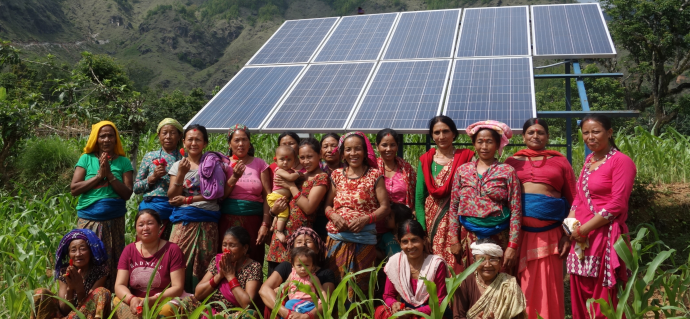
What if we told you that just by taking one simple step you could improve local economies, help educate children, improve health care and empower women in some of the poorest communities in the world? Would you believe us?
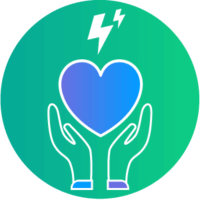
Renewable energy doesn’t just help save the planet and save money on your bills, it can also help communities out of poverty.
1.2 billion people live without access to energy, and a lack of access to electricity means missing out on many opportunities in life in education, career development and health.
However, renewable energy is the solution to make energy accessible for more and more people. Renewable energy technology is now significantly cheaper than diesel or kerosene-based systems, and cheaper than extending the electricity grid in areas with low populations and per capita energy demand.
Local, green solutions, like solar pumps and microgrids, give poorer smaller communities control over their own power and water supplies. These systems are relatively cheap to maintain and the people living off of their own renewably sourced electricity are not subject to changes in fuel prices, volatile geopolitics or the unsustainable demands of the massive energy conglomerates. Renewable energy fosters self-reliance for underserved communities.
One small UK charity, Renewable World, is generating a significant change in local communities in Africa and Nepal by helping them to generate electricity and by doing so, becoming one of the most effective charities in the UK.
Renewable World was originally established as The Koru Foundation and one of its core objectives from the outset was to act as a link between the European renewable energy sector and energy-poor communities in the developing world. They then began partnering with organisations to fund renewable energy projects in 2008 in Peru, Nepal, Uganda, Nicaragua, Mozambique and Tanzania. In 2009 they became the official adopted charity of both the British and European Wind Energy Associations, formally kick-starting the long-standing relationship between the charity and the renewable energy industry. The Koru Foundation then became Renewable World in 2010 with an enhanced commitment to work with local partners.
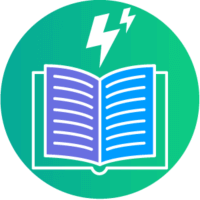
Many of these communities are separated by vast distances with no basic infrastructure to connect them to wider society and to the vital lifelines they need to survive. Add to this unpredictable rainfall caused by climate change and poor education, and you have very difficult conditions for growth and progress.
Renewable World is empowering local communities and helping them lift themselves out of poverty by generating renewable energy from solar panels and solar-powered pumps to bring electricity to their area. This, in turn, creates a waterfall effect which can benefit all facets of the community and local life.
Access to clean running water supplied by solar-powered water pumps means that local farmers can irrigate their crops, and women and children have more free time - giving them more opportunities and access to education and health standards improvements.
Solar microgrids also benefit local economies by providing homes with light so children can study without using dangerous kerosine lamps, and give access to better technology for farming. Solar energy bridges the digital divide by giving locals access to mobile phone charging, computers and the internet. It also stops dependence on expensive fossil fuels, saving the whole community money that can be spent on other things.
There is really no better way to help communities help themselves, in such a global and sustainable way.
Solar Microgrids project in Kenya
Why help Kenya? The Lake Victoria area, which borders Kenya, Uganda and Tanzania is one of the poorest areas in Africa. Two million people live here next to the second largest freshwater lake in Africa and it has come to be known as “the belt of poverty.” The region has the highest rates of malnutrition and HIV in Africa.
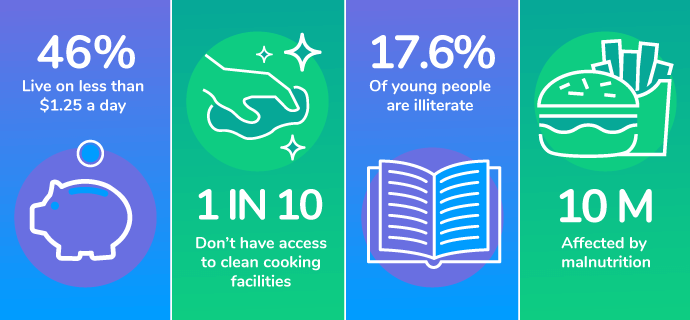
Research from the Kenya Marine and Fisheries Research Institute showed that while the main economic activity in the area was fishing, the fishermen struggled to lift themselves out of poverty. One of the reasons given for this was poor business acumen and the inability to freeze their catches. This meant that they had to sell their catch at almost throwaway prices to prevent it from going bad. The report also cited the inability to access education and adequate healthcare.
Just 7.7% of people in the region have access to electricity and in the absence of good infrastructure, this can make simple acts, such as freezing fish to sell later at better prices, almost impossible.
Since 2013 Renewable World has been installing solar microgrids in small villages surrounding the lake.
A microgrid is a local independent energy system that can generate, distribute, store and regulate the flow of electricity without the need to be attached to the main electricity grid. It is essentially a scaled-down version of the main grid and can be used in remote locations where there is no alternative source of energy.
The installation of these solar microgrids has had a huge effect on the local residents, who have taken advantage of the new electricity to open businesses and lift themselves out of poverty, as well as on the local economy.
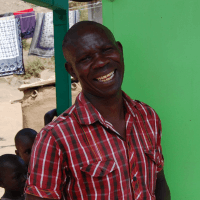
Charles had been a fisherman his whole life before Renewable World changed his life in 2015 when they installed a new energy hub in Ng’ore. Before that households had no electricity and fishermen earned very little. Before the installation of the hub, Charles had very few options available to him.
Read how Renewable World changed Charles’ life with their solar microgrids
So far Renewable World has installed a total of 10 solar microgrids in the region, comprising of 211 energy connections and reaching a total of 4,140 people.
Since the microgrids are not yet operating at full capacity, their next step is to provide a further 147 electricity connections. They will also be completing the installation of water pumping systems in four communities, which will be used by the local women’s agricultural co-operatives to grow vegetables using drip-irrigation techniques.
How does Renewable World choose their projects?
We got some insider information on how Renewable World chooses their projects and how they maintain such complicated technology from Renewable Energy Global Technical Manager Baburam Paudel.
How does Renewable World choose the projects that it works on?
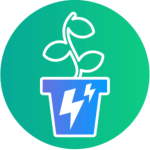
When choosing a project, we carefully evaluate the following: the need, demand, feasibility and sustainability of the project. First of all, we investigate whether there is a real need for the technology or not. Once we have identified the need, we check the demand, ensuring that there are communities interested in this solution. Once potential beneficiary communities have been identified we check the feasibility of this solution for each community, ensuring that they are able to generate the resources required to help install, maintain and finance the energy system into the future. Finally, we evaluate the long-term sustainability of the project and what impacts the community will receive in the long-term.
Our projects fall into two categories:
Pilot projects: these are small-scale projects where we pilot either a new technology or business model, or where we pilot a proven technology in a new location.
Scale-up projects: where we scale up a proven technology, to prove the model on a bigger scale. Scale-up projects become more financially viable, more sustainable, and more cost-effective.
Sometimes our decision making is driven by the type of technology: we first of all choose the technology, then choose a district in which to implement that technology, followed by demand generation (whereby we market the product and get communities who are interested to get in contact with us). At other times, our decision making is driven by wanting to help a particular district or area where we know there is a great need (for example a lack of access to water). In this case, we would carry out a survey and offer a range of different technologies that meet their specific needs.
Would there be the possibility of expansion in the future? For example, taking on more large-scale projects?

Yes, we are always looking expand our projects and to scale up our proven clean energy solutions. By scaling up a proven model we can significantly increase the number of beneficiaries that we reach, bringing access to energy (and the associated economic and developmental improvements) to more people and communities in need. In fact, this is what is required for us to reach our goal of moving 100,000 people out of energy poverty by 2021.
Our scale up projects also include elements of innovation. For example, when we scale up a project, we will scale up a proven technology and model, increasing the number of beneficiary communities. But we will also add in new elements of innovation and test these at the same time, with less risk. Our aim in the long-term is to carry out multi technology programmes.
What are the technical problems involved with installing and maintaining technology in these remote communities?
The installation of the technology tends to run very smoothly, where we encounter the most issues is in relation to the maintenance and repair of the systems.
A key part of our projects involves providing training for community members around the maintenance of their energy systems and how to carry out basic repairs. This means that simple maintenance and basic repairs can be carried out within the community, as the need arises. For any more substantial or complicated repairs or maintenance tasks, the community will need to call a specialised company and get them to come and carry out the required tasks or repairs. This is where the issue lies. Since the communities are remote, their calls are often not prioritised, meaning they may have to wait a while before someone comes out to help.
We try to tackle this issue by ensuring that every time an energy system is installed in a community, it is accompanied by a warranty and a service level agreement, meaning that communities will always be prioritised for follow up support by the technical providers. We also aim to improve the supply chain network in country. We try to ensure that there is a good supply chain for spare parts that might be needed, and also that there are sufficient companies in the right location with the knowledge to carry out repairs (ideally there will be smaller companies located in the nearest city, which communities can call upon for intermediate maintenance or repair tasks, and larger specialist companies located in the capital to be called upon for more complicated issues).
Solar Water Pumping in Nepal
Nepal is another of the main centres where Renewable World is trying to improve people’s lives, using renewable energy to help remote communities who have no access to clean running water.
According to the Nepal Water Supply, Sanitation and Hygiene Sector Development Plan for 2016-2030, across Nepal only 41% of the population in rural areas have piped water services. This means that the majority of the population depend on covered wells, open wells and other unreliable sources like river and spring water.
Only 60% of the population has access to grid electricity, and geographically and more than 60% of the country is deprived of access to the national grid. In most of the villages in the central and western development regions where Renewable World has already installed pumps, the nearest water source is more than 20 minutes away. This means that the women and children must walk miles on repeated trips to collect water or face suffering from diseases caused by unclean water.
Renewable World has sent teams of engineers to these remote locations to install solar water pumps to carry the water from the valley below the villages to a storage unit on the higher ground, where it can be siphoned down to individual tap stands in the village, giving each house its own individual water source.
The users are charged a small tariff which is set by the community. The community collect the tariff and it’s then reinvested into the system. So this is all locally managed by the community-based organisation (or CBO) that was established to manage and run the energy system. Renewable World also helps villagers claim their full allowances from the government, including solar and pumping subsidies.
The people who most benefit from the pumps are the women and children, who now have more time to spend on education and farming, thereby improving their economic situation.
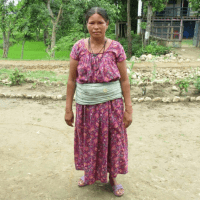
Surja Tiuwa has a terrible decision to make.
In order to make ends meet, she must decide whether to send her 14-year-old son across the border from Sanneghari to India to find work. Typically he will be away from his home and family for eight to nine months at a time, seeking short-term jobs such as labouring on construction projects, cleaning and farm labouring.
Due to a short growing season and unpredictable changes in weather attributed to climate change, she has no choice but to separate her family in order to survive.
Surja’s community will soon be benefitting from a solar water pumping system from Renewable World’s next round of installations.
Renewable World is currently looking for new members to come and join their grid of supporters. Head over to their website where you can find out more about this great charity which is making renewable energy even better for both the planet and its inhabitants!
